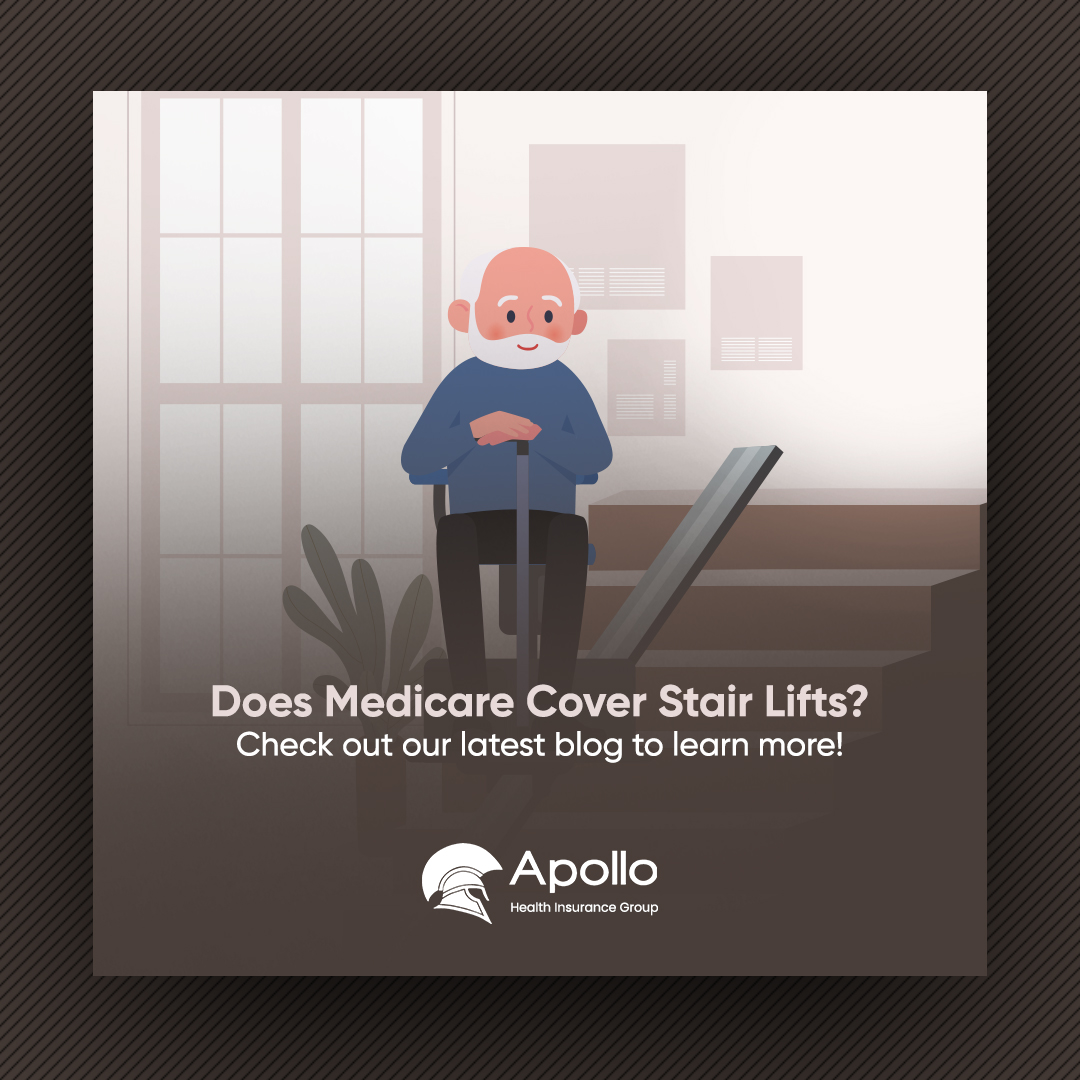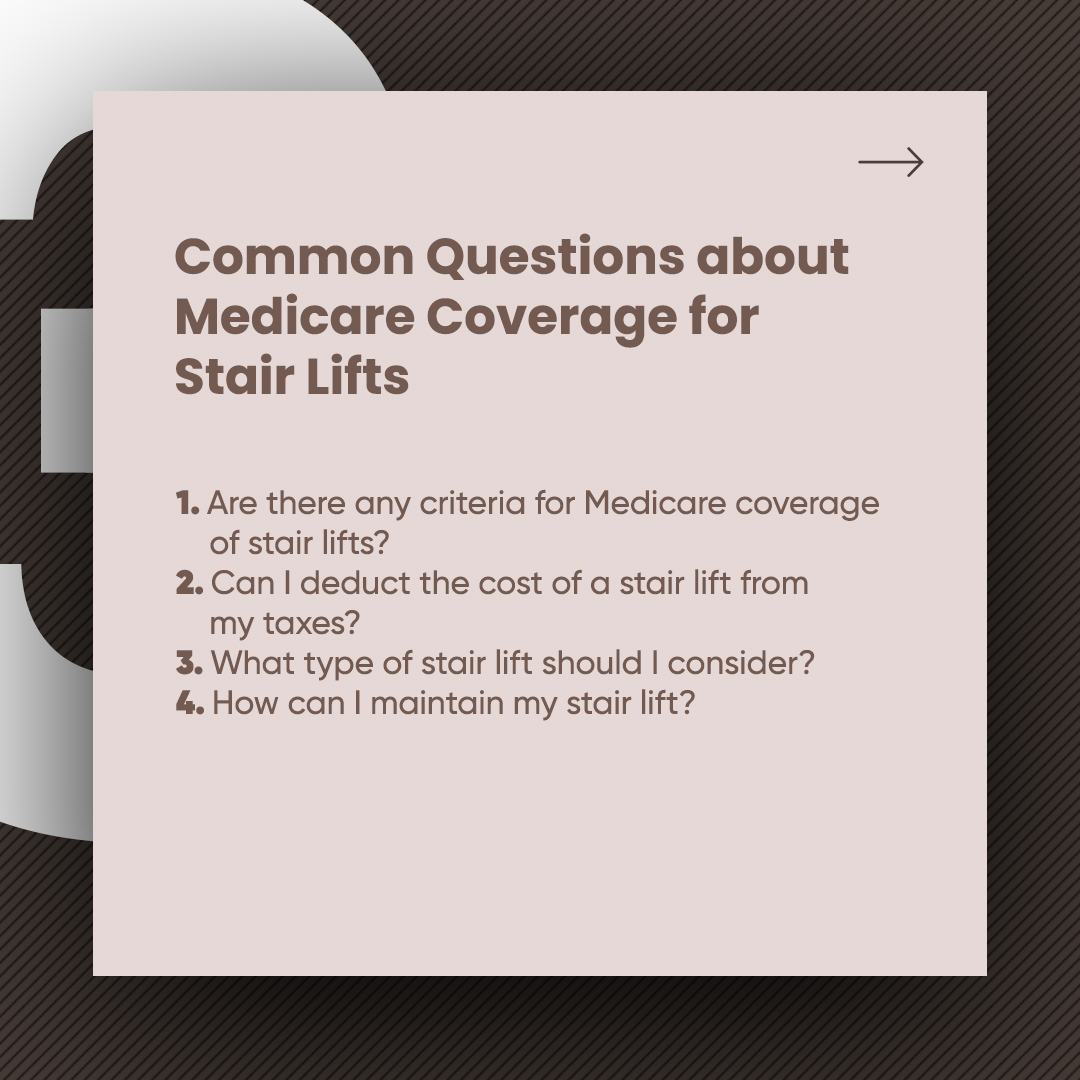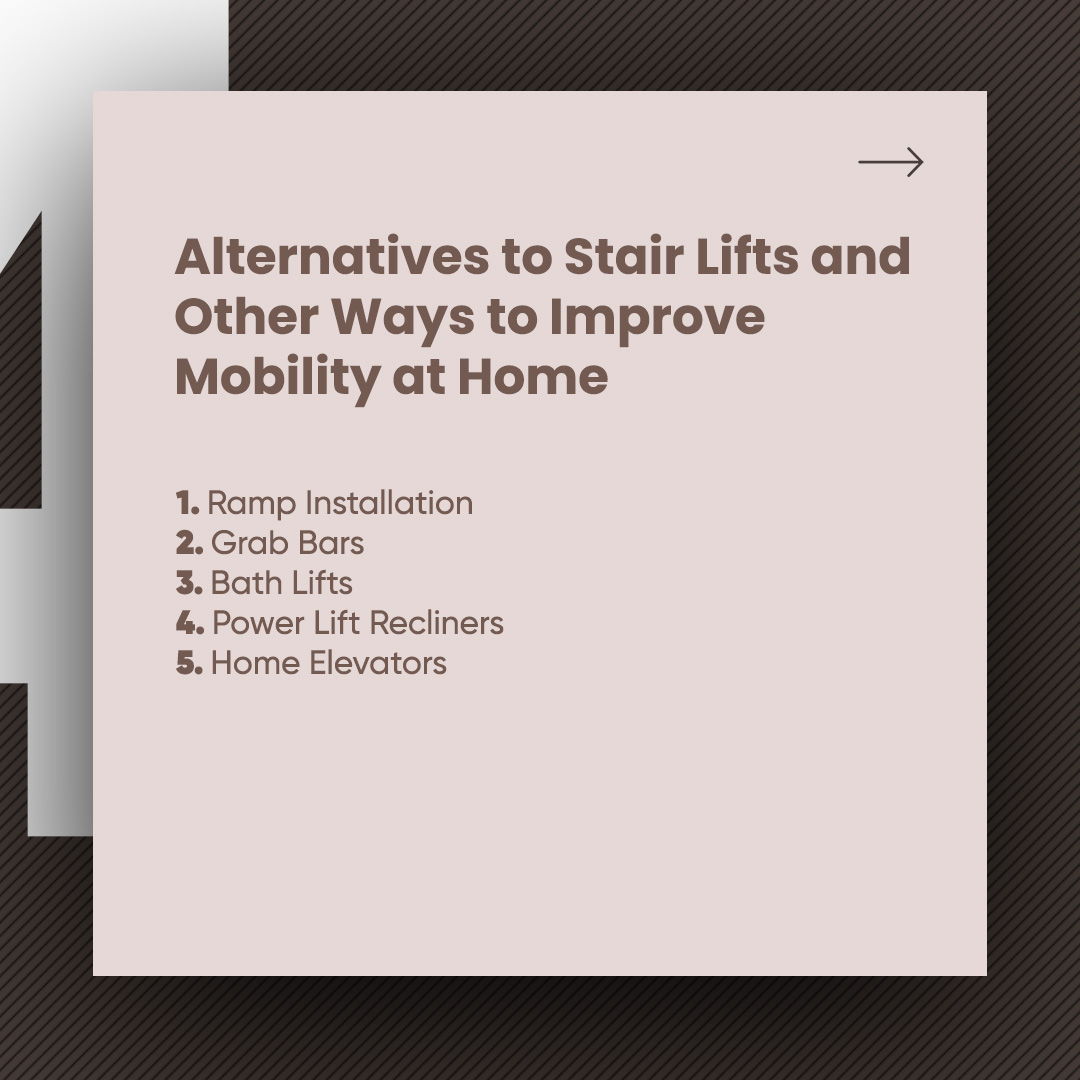If you are or know someone who needs effortless access to different levels of their house, then learning about Medicare coverage for stair lifts might be the most important thing you can do.
Stair lifts provide a safe and reliable solution for navigating stairs in your home, but unfortunately, not everyone is able to afford them out-of-pocket.
That’s why understanding if and how Medicare covers the cost of stair lifts is so crucial!

Understanding Medicare Coverage for Stair Lifts – A Comprehensive Guide
As you grow older and face mobility issues, you might consider installing a stairlift in your home. Stairlifts are an excellent option to maintain your independence and provide safety while ascending and descending stairs.
However, the cost of stairlifts can be a significant financial burden.
Fortunately, there are some options to help offset the expenses, one of which is coverage by Medicare.
Does Medicare Cover Stairlifts?
Unfortunately, Medicare Part A doesn’t provide coverage for stairlifts as durable medical equipment (DME). You cannot use your Medicare benefits to purchase standby lifts, platform lifts, or stairlifts.
Medicare Part B, which covers medical insurance, extends coverage for the use of patient lifts as durable medical equipment (DME) prescribed by your doctor for use in your home.
The transition to meeting the Part B Deductible signifies that you pay 20% of the Medicare-Approved Amount if your supplier accepts assignment.
Medicare covers a range of DME differently. Rental or buying of the equipment is a factor in the kinds of equipment you have prescribed.
The acquisition of DME is subject to factors and rules. Doctors and DME suppliers must be enrolled in Medicare to enable Medicare’s coverage of your DME.
Medicare ensures that doctors and suppliers meet strict standards to enroll and stay enrolled. It is crucial to remember that if your doctor or supplier is not enrolled, Medicare will not pay for their claims, making enrollment a crucial factor.

What are the Alternatives to Medicare Coverage for Stair Lifts?
If you don’t qualify for Medicare coverage, you might look for other financing options like rent to own, credit cards, or personal loans.
Many stairlift manufacturers offer financing options with lower interest rates and flexible payment plans. Some charitable organizations, including non-profits, charitable trusts, and religious organizations, help seniors cover the costs associated with home modifications.
If the cost of a stair lift is still beyond your budget, it’s worth considering alternative options that are more budget-friendly.
These options include the installation of a stair lift that has been used previously, the purchase of a refurbished lift at a discounted price, or a rental option.
While each one of these options has its own advantages and disadvantages, it’s important to weigh your options and choose one that’s cost-effective without harming your safety.

How can you Choose the Right Stair Lift?
Stairlifts come in different types, sizes, and styles. Your choice should depend on your specific needs, mobility issues, and home design.
You might consider a straight or a curved stairlift that fits your home’s architectural design, sitting or standing stairlifts that accommodate your mobility needs, or heavy-duty stairlifts that support bariatric users.
Additionally, you might look for stairlifts that are easy to install, energy-efficient, and have adjustable speed and safety features.
Installing a stairlift in your home can be a life-changing investment that preserves your independence and ensures your safety.
Knowing your Medicare coverage options can help you make informed decisions about your health and long-term care.
If you need more information about stairlifts, reach out to a certified and reputable stairlift dealer or manufacturer. They can advise you on the latest models, financing options, installation procedures, maintenance, and repairs.
Remember, the right stairlift can improve the quality of your life and help you age in place with dignity and comfort.
Finding it difficult to climb your staircase due to age or mobility issues can be frustrating, especially if you are exploring options to modify your home to fit your needs.
One of the options worth considering is installing a stair lift, which can improve your mobility, increase independence, and enhance safety.
However, cost can sometimes be a barrier to obtaining the required assistance, which is why it’s important to understand what types of stair lifts are covered by Medicare and what costs are associated with them.
If you have any additional questions about stair lifts, speak to a licensed insurance sales agent or supplier to clarify your queries.
A Guide on How to Apply for Medicare Reimbursement for a Stair Lift Purchase
As we age, most individuals experience mobility concerns that may limit their independence and restrict their daily activities.
This can be due to several reasons, one of which is difficulty climbing up and down the stairs. Fortunately, a stair lift can provide a safe and practical solution for this concern.
In this guide, we will show you how to apply for aid for a stair lift purchase.
1. Determine if you are eligible for Medicare coverage
Before you apply for Medicare reimbursement for a stair lift purchase, you must first determine whether you meet the eligibility requirements.
You must be 65 years of age or older and enrolled in Medicare Part B. Additionally, you must have a medical condition or disability that justifies the use of a stair lift.
You will need a written prescription from your physician indicating the medical necessity for the stair lift to help support your claim.
2. Gather the required documentation
To apply for Medicare reimbursement for a stair lift purchase, you will need to have the necessary documentation.
Review the Certificate of Medical Necessity CMS-849 Seat Lift Mechanisms document for details on what is necessary to be considered for receiving partial help paying for some seat lift mechanisms if every other option has been tried unsuccessfully.
3. Wait for a decision
Once you have submitted your claim, Medicare will process your request and determine whether you are eligible for reimbursement.
4. Consider getting help from a licensed professional
Applying for Medicare aid for a stair lift purchase can be a complex process, and it can be challenging to navigate alone.
Consider seeking assistance from a licensed professional, such as a healthcare provider or social worker, to help you with the application process. They can help you gather the necessary documentation, fill out forms, and answer any questions you may have.
In conclusion, applying for Medicare aid for stair lift mechanisms can be overwhelming. Fortunately, with the right guidance and knowledge, it can be a relatively straightforward process.
Start by determining if you meet the eligibility requirements and gathering the necessary documentation.
Then, submit your documents to Medicare and wait for a decision. Remember to seek assistance from a licensed professional if you feel overwhelmed or have any questions.
With the right approach, you can enjoy the benefits of a stair lift while minimizing the financial burden.

Common Questions about Medicare Coverage for Stair Lifts
As we age, mobility can become a challenge, especially when it comes to stairs. In some cases, a stair lift may be the solution to regain independence and ease of movement.
However, when it comes to Medicare coverage for stair lifts, there is often confusion and uncertainty.
1) How can I reduce costs of stair lifts?
While stair lifts are undoubtedly expensive, there are several options available for reducing the cost.
These include researching your coverage options, seeking advice from healthcare providers, opting for less expensive options such as refurbished stair lifts, and taking advantage of government financing schemes.
2) What type of stair lift should I consider?
There are two main types of stair lifts – straight and curved.
Straight stair lifts only go up and down a straight set of stairs, while curved stair lifts are custom-built to fit the particular curve and angle of a set of stairs.
The type of stair lift you need will depend on the layout of your staircase.
It’s important to have a professional assessment done to determine the best option for your home and individual needs. Therefore, it’s important to consider the cost implications of the two types when making a choice that aligns with your budget.
3) How can I maintain my stair lift?
To ensure safety and longevity of your stair lift, it’s important to perform regular maintenance and inspections.
This includes oiling moving parts, cleaning the track, checking the batteries, and tightening screws and bolts.
It’s also recommended to have a professional maintenance check performed annually to catch any potential issues early on.
When considering a stair lift, it’s important to have a professional assessment done and prioritize regular maintenance to ensure a safe and reliable mobility solution.
By understanding the options and taking proactive measures, you can regain independence and ease of movement within your home.

Alternatives to Stair Lifts and Other Ways to Improve Mobility at Home
Mobility issues can be incredibly challenging for seniors and persons with disabilities, making it harder to do everyday tasks such as climbing stairs, getting in and out of bed, and overall moving around the house.
While stair lifts have been the go-to solution for those with mobility issues, it may not always be the best option for everyone.
In this blog section, we will explore some alternative solutions to improve mobility at home so that you can maintain your independence and live comfortably in your own home.
1. Ramp Installation
If stairs are becoming too much of a challenge, installing a ramp could be an excellent solution.
Ramps come in different sizes and shapes and can be made of various materials to suit the needs and preferences of the homeowner.
For example, a wooden ramp is ideal for those who want something more aesthetically pleasing, while aluminum ramps are lightweight and can be easily moved. The ramp should adhere to ADA guidelines and be installed by a professional to ensure safety.
2. Grab Bars
In addition to improving mobility, grab bars can provide extra safety and support throughout the house.
They can be mounted anywhere, from the shower to the bedroom, and come in different materials and styles to fit the home’s décor.
Installing grab bars can significantly reduce the risk of falls, especially when used in conjunction with other mobility aids such as walkers or canes.
3. Bath Lifts
Bathroom mobility can be particularly challenging, especially when getting in and out of the bathtub.
Bath lifts can be an excellent solution to this problem.
These devices lower the user safely into the bathtub and lift them back up when they are finished.
Bath lifts come in different designs, so it is essential to find a model that fits the user’s needs and preferences.
It is important to note that these devices should be installed by a professional and come with a safety belt to ensure the user’s safety.
4. Power Lift Recliners
For those who have difficulty getting in and out of chairs or have limited mobility, power lift recliners can be an ideal solution.
These chairs are designed to help the user get in and out of the chair by slowly raising and lowering with the touch of a button.
They also provide comfort and support, making sitting for long periods more comfortable.
5. Home Elevators
Home elevators may be suitable for those who cannot use stairs but do not want a traditional stair lift.
These elevators come in various sizes and designs to fit the user’s needs and fit within the home’s décor.
While they are more expensive than other options mentioned here, home elevators can provide a considerable boost to the user’s independence and convenience.
Mobility issues do not have to mean sacrificing independence or quality of life.
Alternatives such as ramps, grab bars, bath lifts, power lift recliners, and home elevators provide different solutions to improve mobility at home. These aids can make a significant difference in people’s lives, allowing them to move around their homes safely and independently.
It is essential to explore the different options and find the one that best suits the user’s needs and preferences.
Consulting with a professional can also be helpful in determining the best solution for the home and lifestyle.

In conclusion, as people age, mobility becomes increasingly difficult and one of the best ways to stay safe and independent in their own homes is with a stair lift.
Medicare may offer partial coverage for patient lifts if deemed medically necessary, and you can also apply for aid for seat lift mechanisms if all other alternatives have been exhausted.
Additionally, there are other options available as well as alternatives to stair lifts that can help individuals improve their mobility at home.
Everyone should explore the different solutions available to them and make the best decision for their situation.
Make sure to do your research and understand all of the potential costs before investing in any type of medical device or service!
Are you in need of health insurance coverage? Call Apollo Insurance Group to speak with a licensed insurance sales agent today!
-CALLING THE NUMBER ABOVE WILL DIRECT YOU TO A LICENSED INSURANCE AGENT.
By completing the form above, I understand that a Licensed Insurance Agent from Apollo Insurance Group may contact me via phone, email or mail to discuss Medicare insurance options. Calls may be made by auto dialer, text, or robocall and are for marketing purposes. Cellular carrier charges may apply. Providing permission does not impact eligibility to enroll or the provision of services. You can change permission preferences at any time by contacting (816) 608-4333. We do not offer every plan available in your area. Any information we provide is limited to those plans we do offer in your area. Please contact Medicare.gov or 1-800-MEDICARE to get information on all of your options. Apollo Insurance Group is not affiliated with the federal Medicare program or the government. This is a solicitation for insurance.
I am a professional content writer specializing in the health insurance field. My work primarily focuses on simplifying the complexities of healthcare coverage, aiming to provide clarity and insight into an often confusing subject. Empowering people to make informed decisions about their well-being is my passion. At Apollo Health Insurance, we share that commitment. Apollo Health Insurance stands at the forefront of securing the best healthcare coverage for individuals, ensuring affordability without compromising on quality.








